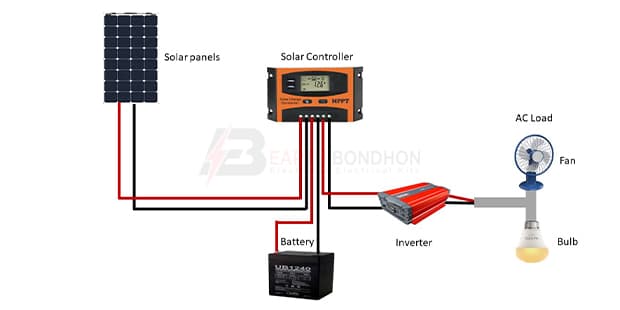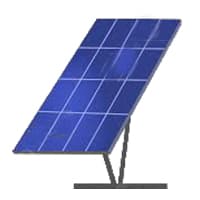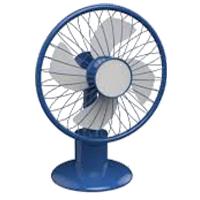Solar Panel for Low Voltage:
This circuit diagram shows how to connect solar panels for low voltage. In this circuit, we use a solar panel board, a solar charge controller, a 12V battery, and an inverter. a fan, a light. First, we need to connect solar panels with the solar chargers, then need to connect a 12V battery to the charge controller. After that input power to the inverter. And lastly input power fan and light from the inverter. This circuit is now ready for use. If you want to need more information about this circuit diagram please check our youtube video.
Advertisements
Components needed For this Project:
You can get the components from any of the sites below:
- Solar Panel 100W [See Buy Click Amazon]
- Solar Panel Charge Controller [See Buy Click Amazon]
- IPS System 3KW [See Buy Click Amazon]
- 12V Battery[See Buy Click Amazon]
- Table Fan [See Buy Click Amazon]
- CFL Light [See Buy Click Amazon]
*Please note: These are affiliate links. I may make a commission if you buy the components through these links. I would appreciate your support in this way!
Advertisements
Components used to make the Solar Panel for Low Voltage:
A solar Panel is a Device That Converts Light From the Sun, Which is Composed of Particles of Energy Called, into Electricity that can be Used to Power Electrical Loads. Solar panels Collect Clean Renewable Energy in the Form of Sunlight and Convert that Lamp into Electricity Which can Then be Used to Provide Power for Electrical Loads. Solar Panels Are Comprised of Several Individual Solar Cells Which are Composed of Layers of Silicon, which provides the negative charge, and boron. Solar Panels Absorb the Photons And in Doing so Initiate an Electric Current.
02. Solar Controller:
A solar Charge Controller is an Electronic Device That Manages the Power Going into the Battery Bank from the Solar Array. It Ensures That the Deep cycle Batteries are not Overcharged During the day and That the power doesn’t run back to the Solar Panels overnight and Drain the batteries. A Solar Charge Controller Manages the Power Going into the Battery Bank From the Solar Array. Some Charge Controllers are Available with Additional Capabilities, load Control, and Lighting, but Managing the power is its Primary Job. A Solar Charge Controller is Available in two Different Technologies, PWM and MPPT.
An inverter is an Electrical device that converts DC current into alternating current (AC) at any voltage and frequency system that can be operated through suitable Transformers, switches, and control circuits. Inverters have no moving parts and are used in a wide range of applications, including high-voltage DC applications in electrical utilities that provide large amounts of power. Inverters are Commonly used to supply AC Power from DC Sources such as Solar Panels or Electric Batteries.
04. 12v Battery:
A 12V Battery is Available As a Non-Rechargeable Alkaline Battery Or In Rechargeable Forms. This Battery is Often Used in Various Outdoor Applications that Require Greater Amounts of Energy in Order to Operate as Desired. 12V Battery is a Name Given to a Unique Style of Battery, but its Voltage is More Than 12 Volts. In Such Cases Where a 12V Portable Battery is Used to Replace an onboard 12-volt Battery, It Is Usually Lighter Than a Standard Version. This is Because It is more likely to be Transported Between Uses and Consumers Will Not Choose to Carry a Large, Bulky Battery. A Portable 12V Battery is Usually Sealed in a case so That it is Waterproof.
A Table fan is a popular electronic device used to produce air circulation and cool down the temperature in homes, offices, stores, and commercial facilities. table fan comes with an oscillating motion or perhaps a swing mechanism wherein it rotates from one side to another at more than 100° about its fixed position. This is done with the help of the gear system, which ensures a gust of cool air over a wider range of table fans.
06. Light:
CFL stands for Compact Fluorescent Lamp which is an improved version of tube lights of earlier days. Like tube lights, it is a vacuum glass tube with fluorescent powder coating which is not as long and straight as tube lights but curved/twisted compact, or small in size. Like a tube light, it has electrodes or filaments at both ends. But in this case, instead of a choke, there is an electronic circuit that drives the Compact Fluorescent Lamp. Because the red wave is less in the light of the Tubelight and Compact Fluorescent Lamp, the object looks a little pale or the correct color of the object does not appear.
Thank You for visiting the website. Keep visiting for more Updates.
Read more Solar System Wiring
Electrical inverter house wiring
Electrical inverter house wiring: This diagram shows how to make Electrical inverter house wiring. In this circuit, we...
Solar panel wiring using Two charger controllers
Solar panel wiring using Two charger controllers: This diagram shows how to make Solar panel wiring using Two charger...
Solar Panel Wiring Connection In House
Solar Panel Wiring Connection In-House: This diagram shows how to make Solar Panel Wiring Connection In House. In this...







0 Comments